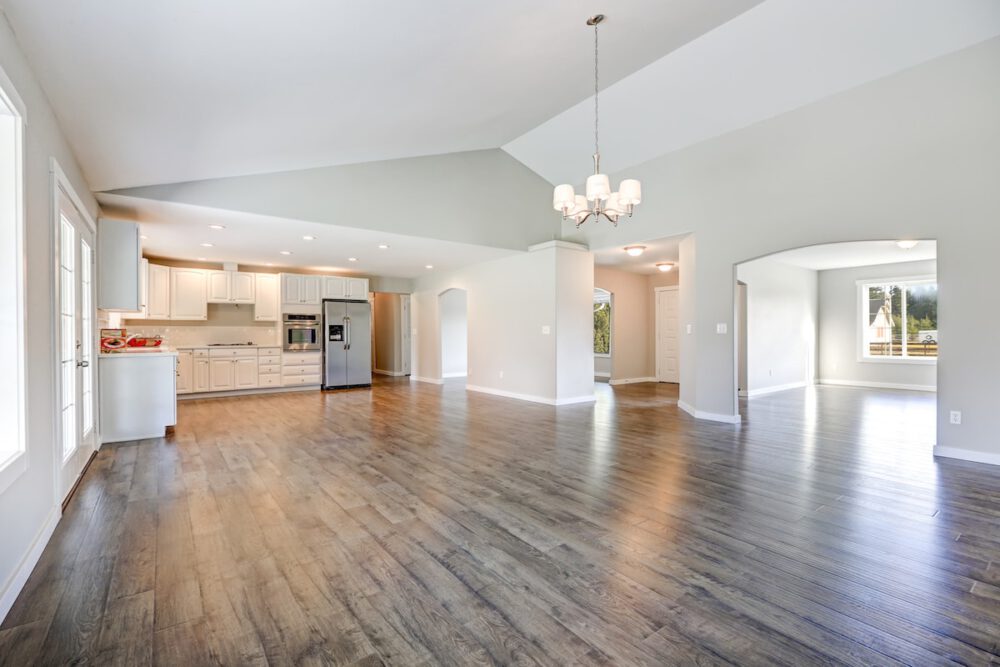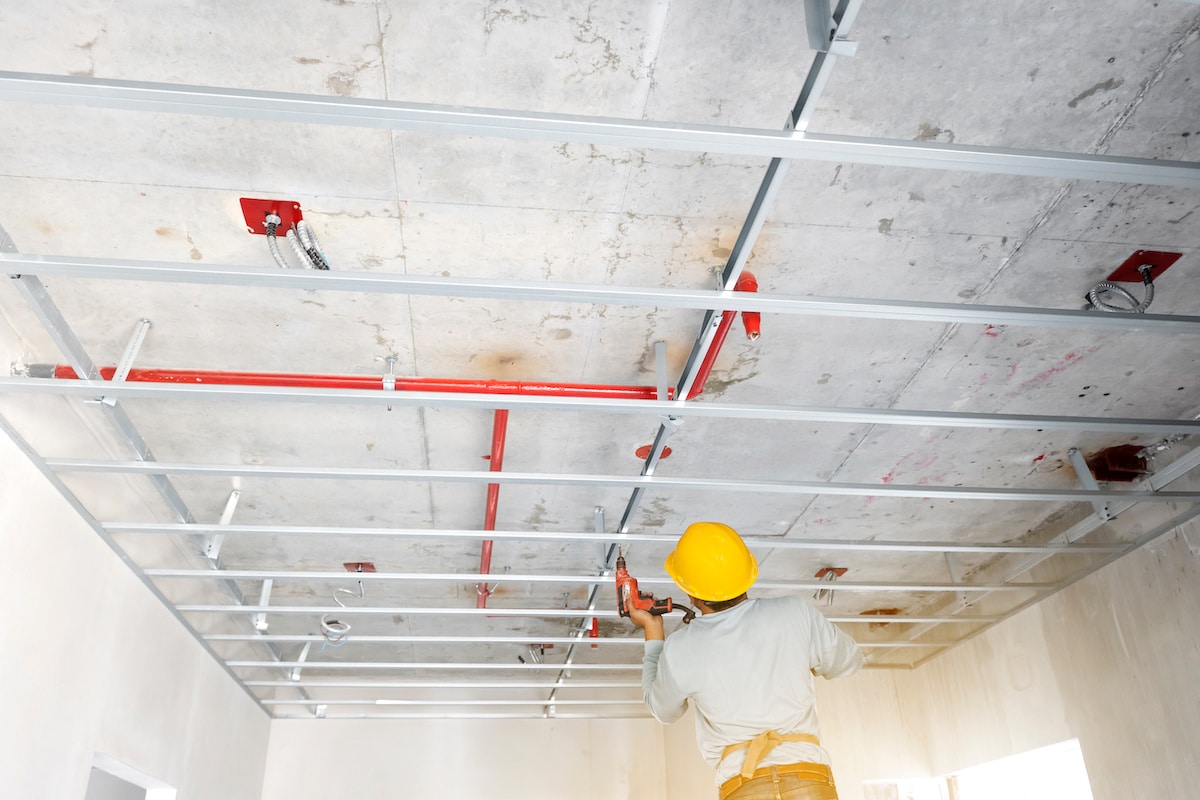Quick Contact!
For the fastest reply, call us at (678) 635-5429.
Mailing Address
1113 Ivey Brook Drive
Bethlehem, GA 30620
Monday – Friday: 8 am – 4 pm
Saturday & Sunday: Closed
Quick Contact!
For the fastest reply, call us at (678) 635-5429.

When it comes to designing or remodeling a space, the ceiling is often an overlooked element. However, the type of ceiling you choose can significantly impact the aesthetics, functionality, and even the value of your property. Two popular options in both residential and commercial settings are drop ceilings and traditional ceilings. Each has its own set of advantages and disadvantages, making it essential to carefully consider your needs and preferences before making a decision.
In this article, we’ll cover the key differences between drop ceilings and traditional ceilings, exploring the pros and cons of each. By the end, you’ll have a clearer understanding of which ceiling type is better suited for your specific project.
A drop ceiling, also known as a suspended ceiling or false ceiling, consists of a grid system that hangs below the original ceiling. This grid supports lightweight ceiling tiles or panels, creating a secondary ceiling beneath the structural one.
Drop ceilings are commonly found in commercial buildings, basements, and other areas where easy access to pipes, wiring, and ductwork is necessary.
One of the most significant advantages of drop ceilings is their accessibility. Since the tiles or panels can be easily removed, it allows quick and convenient access to:
This feature is particularly beneficial in commercial spaces or basements where maintenance and repairs may be frequent.
Drop ceilings can provide excellent sound insulation, reducing noise transmission between floors or rooms. The ceiling tiles themselves often have sound-absorbing properties, making drop ceilings a popular choice in offices, classrooms, and home theaters where noise control is important.
Drop ceilings offer a wide range of design options. Ceiling tiles are available in various colors, patterns, and textures, allowing you to customize the look of your ceiling to match the overall design of the space.
Additionally, you can easily update or replace tiles without major renovations, giving you the flexibility to change the appearance of your ceiling over time.
If your existing ceiling has imperfections such as cracks, stains, or uneven surfaces, a drop ceiling can effectively conceal these flaws. The grid system creates a smooth, uniform surface that can hide unsightly elements, giving your space a clean and polished look.
Drop ceilings can enhance energy efficiency by reducing the volume of space that needs to be heated or cooled. The gap between the drop ceiling and the original ceiling can act as an insulating barrier, helping to maintain a more consistent indoor temperature and potentially lowering energy costs.

One of the primary drawbacks of drop ceilings is the reduction in ceiling height. The grid system typically hangs a few inches below the original ceiling, which then can make a room feel smaller and more confined.
This may not be ideal in spaces with already low ceilings or where a sense of openness is desired.
While drop ceilings offer many practical benefits, they are sometimes perceived as being of lower quality or less aesthetically pleasing than traditional ceilings. In residential settings, drop ceilings are often associated with basements or older homes, which may affect the perceived value of the space.
Drop ceiling tiles are lightweight and can be susceptible to damage from water leaks, impacts, or general wear and tear. Damaged tiles can be easily replaced, but frequent replacements can become a hassle and add to the overall maintenance of the ceiling.
A traditional ceiling, also known as a standard or drywall ceiling, is the most common type of ceiling found in homes and commercial buildings. It consists of drywall or plasterboard attached directly to the ceiling joists or rafters, creating a smooth, seamless surface.
Traditional ceilings can be flat, vaulted, or feature decorative elements such as crown molding or coffered designs.
Traditional ceilings are visually appealing and can make the space feel elegant and sophisticated. They offer a clean, seamless look that can be enhanced with various design elements such as paint, texture, or molding.
Traditional ceilings are also versatile, complementing a wide range of architectural styles from modern to classic.
Traditional ceilings do not require a grid system or additional layers, so they maintain the full height of the room. This can make a space feel larger, more open, and more inviting. Higher ceilings are often associated with luxury and can enhance the overall ambiance of a room.
Traditional ceilings are generally more durable than drop ceilings. Drywall or plasterboard is less prone to damage from impacts or wear and tear, making it a longer-lasting option.
Additionally, traditional ceilings can withstand moisture better than drop ceiling tiles, reducing the risk of mold or mildew growth.
In residential settings, traditional ceilings are often preferred by homebuyers and can contribute to a higher resale value. The clean, seamless look of a traditional ceiling is considered more desirable, especially in living rooms, bedrooms, and dining areas.
Traditional ceilings offer endless possibilities for customization. You can choose from a variety of finishes, textures, and colors to match the overall design of the space.
Additionally, traditional ceilings can be enhanced with architectural details such as coffered ceilings, tray ceilings, or exposed beams, adding character and charm to your home.
One of the main disadvantages of traditional ceilings is the difficulty in accessing utilities. If you need to repair or replace plumbing, wiring, or HVAC components, you may have to cut into the drywall, which can be time-consuming and costly to repair afterward.
Installing a traditional ceiling is generally more labor-intensive and requires more skill than installing a drop ceiling. The process involves steps such as attaching drywall or plasterboard to the ceiling joists, taping, and mudding the seams, and applying a finish. This complexity can lead to higher installation costs and longer project timelines.
While traditional ceilings are more durable, they can still suffer from issues such as cracks, water damage, or settling over time. Repairs to traditional ceilings often involve patching and repainting, which can be more costly and time-consuming than replacing a drop ceiling tile.
Traditional ceilings do not offer the same level of sound insulation as drop ceilings. Sound can easily travel between floors or rooms, which may be a concern in multi-story homes or commercial spaces where noise control is important.

Now that we’ve explored the pros and cons of both drop ceilings and traditional ceilings, let’s compare them based on several key factors to help you determine which option is better for your specific needs.
The choice between drop ceilings and traditional ceilings ultimately depends on your specific needs, budget, and the type of space you’re working with. Here are some scenarios to help guide your decision:
Both drop ceilings and traditional ceilings have their unique advantages and disadvantages, making them suitable for different applications. Drop ceilings offer practical benefits like easy access to utilities and sound insulation, while traditional ceilings provide a more aesthetically pleasing and durable option.
At Georgia Home Remodeling, we specialize in both drop ceiling and traditional ceiling installations, ensuring that your project meets your exact specifications and needs. Whether you’re looking to enhance the look of your home or create a functional space in your commercial property, our experienced team is here to help you make the right choice.
Contact us today to discuss your ceiling options and get started on your next remodeling project!
Georgia’s Home Renovation & Remodeling Specialists